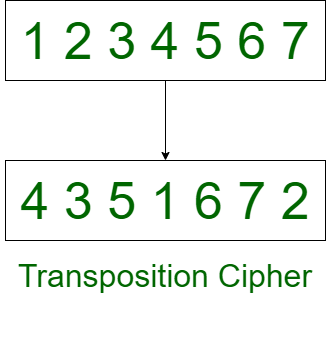


(As we are using Regular Case transposition in this example, any empty cells at the end have been padded with the letter ‘X’.) TUsing this table, we can now create our ciphertext. Then we simply write the text we wish to encrypt out under it, moving to a new line once we reach the end of each row. In the next row, each letter is given a number that dictates its alphabetical position in the keyword: since ‘G’ is the first letter of the alphabet that is present in the keyword, it gets designated ‘1’ ‘I’ is given ‘2’ as it appears next and so on. For this example, we’ll be using the keyword of ‘Turing’, which will define how many columns we’ll use to encrypt the message: since the keyword has six letters in it, we’ll be using six columns.To encrypt the text, we write each letter of the keyword at the top of a column. Working with columnsAs with every cipher, you first need to define a key.
Transposition Cipher Example How To Recover The
Increased complexity = Increased security?This initially seems to be a more complex method of encryption compared to the simple transposition cipher – and therefore it surely must provide more security? The answer is both ‘yes’ and ‘no’.When this cipher was first created, it would have of course provided more security than those that came before it. GOnce the columns have been written out, rearrange them so the keyword makes sense and then read the resulting text off row-by-row. Then put the letter that appears next in the alphabet at the top of the second column, etc.With that done, start writing out the ciphertext – however, whereas before we wrote across the rows, this time we write down the columns. All you do is start with the letter in the keyword that appears first in the alphabet, in this case G, and put this at the top of the first column. If you know the keyword, this process is fairly straight forward. DecryptingNow that we have an encrypted piece of text, we need to know how to recover the actual message.
Since these might take a while to crack, there are only two this time. Your turn to crack the code (try these at your desk!)Try the following examples at your desk and see if you get the correct results.


 0 kommentar(er)
0 kommentar(er)
